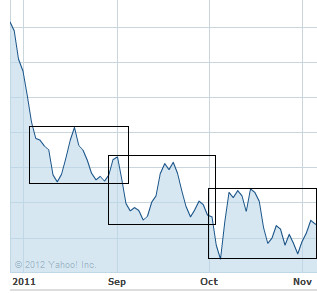Trading Idols: Nicolas Darvas
Apr 8, 2012 at 2:18 pm in General Trading by
We all have our trading idols – those legendary speculators who first inspired us to play the trading game, and in whose footsteps we would like to follow.
One of my trading idols in Nicolas Darvas, the ballroom dancer turned stock trader whom I first became aware of some years ago when I borrowed his book “Wall Street: The Other Las Vegas” from my local library. This was one of the first books that made me realise that the financial markets are like a giant casino, and that there is little difference between trading, investment, and other forms of speculation. Whether we look for patterns in price charts or studiously study budgets and balance sheets, we are all essentially gambling — which is one of the reasons why I don’t agree with so-called ‘serious’ investors who look down on spread betting purely because of the gambling-sounding word ‘betting’. I might also argue that blindly holding a falling stock forever as a long-term investment, in the face of adverse price action, is the biggest gamble of all.
Anyway, if you want to find out more about the life and times of Nicolas Darvas himself, you really need to read his other book ‘How I Made $2 Million in the Stock Market’. That’s an inspiring title if ever I read one, even if $2,000,000 (it looks more if I write it like that) isn’t as much as it was at the time that Darvas made it. This book tells the story of how Darvas travelled the world as one half of a dancing act, all the while telegraphing his trading instructions to his stockbroker from wherever he happened to be at the time.
To cut a short story (it’s a small book) even shorter, the trading journey that took him from being a fundamentalist to being a technician, and eventually a techo-fundamentalist, culminated with a bank balance in excess of — you’ve guessed it — two million dollars. Which was a lot of money in 1959, and which for most people is still a lot of money now.
To put you out of your misery, and in case you want to try and follow in the footsteps of Nicolas Darvas, I can tell you that his “secret” was spotting that stock prices tended to oscillate within a trading range before breaking out into a higher or lower trading range that might even overlap. He called this his ‘box theory’, which as a picture might (but don’t take it too literally) look something like this for a falling stock price:

Darvas was not a spread bettor, because there was no such thing in those days. If he had been, I reckon he could have made even more money without the frictional costs — dealing fees and stamp duty reserve tax — of regular stock trading. Will his method still work today? That’s for you to decide.
Tony Loton is a private trader, and author of the book “Position Trading” (Second Edition) published by LOTONtech.

